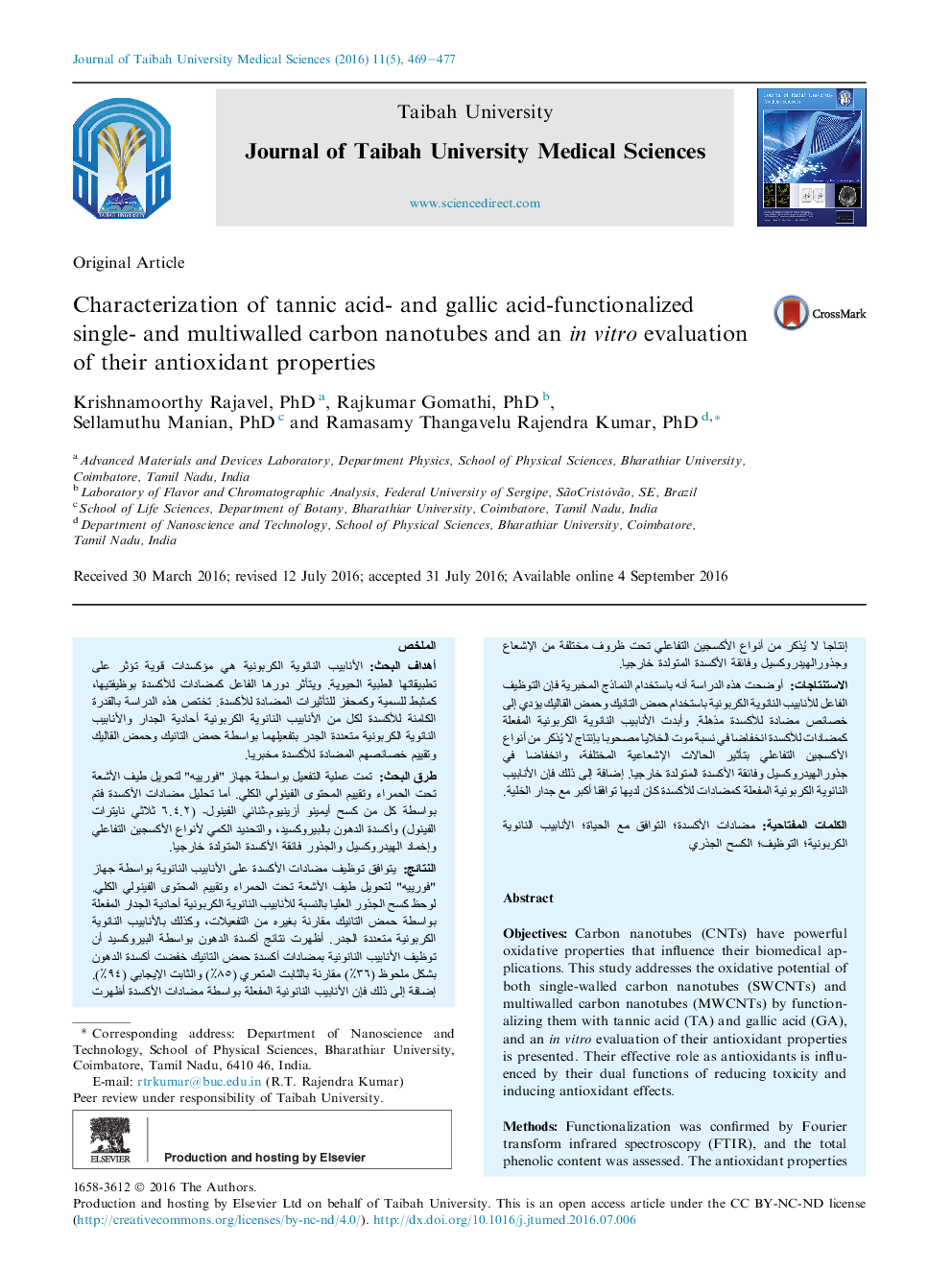| کد مقاله | کد نشریه | سال انتشار | مقاله انگلیسی | نسخه تمام متن |
|---|---|---|---|---|
| 5680218 | 1408697 | 2016 | 9 صفحه PDF | دانلود رایگان |
ObjectivesCarbon nanotubes (CNTs) have powerful oxidative properties that influence their biomedical applications. This study addresses the oxidative potential of both single-walled carbon nanotubes (SWCNTs) and multiwalled carbon nanotubes (MWCNTs) by functionalizing them with tannic acid (TA) and gallic acid (GA), and an in vitro evaluation of their antioxidant properties is presented. Their effective role as antioxidants is influenced by their dual functions of reducing toxicity and inducing antioxidant effects.MethodsFunctionalization was confirmed by Fourier transform infrared spectroscopy (FTIR), and the total phenolic content was assessed. The antioxidant properties were analyzed by scavenging di(phenyl)-(2,4,6-trinitrophenyl) iminoazanium, lipid peroxidation, reactive oxygen species (ROS) quantification and quenching externally generated hydroxyl and superoxide radicals.ResultsThe functionalization of nanotubes with antioxidants was conformed via FTIR and measurement of total phenolic compounds. Higher radical scavenging was observed for TA-functionalized SWCNTs than for other functionalizations and MWCNTs. The lipid peroxidation results revealed that the functionalization of nanotubes with the antioxidant TA significantly decreased lipid peroxidation (36%) compared with naked nanotubes (85%) and the positive control (94%). Furthermore, antioxidant-functionalized nanotubes showed negligible production of ROS after being irradiated under different conditions, and externally generated hydroxyl and superoxide radicals were quenched.ConclusionThis study showed, using in vitro models, that effective functionalization of CNTs with TA and GA leads to remarkable antioxidant properties. Antioxidant-functionalized nanotubes showed a reduction in cell lethality correlated with negligible ROS production under different irradiation conditions and quenching of externally generated hydroxyl and superoxide radicals. Further, antioxidant-functionalized nanotubes were more compatible with the cell membrane.
Journal: Journal of Taibah University Medical Sciences - Volume 11, Issue 5, October 2016, Pages 469-477
